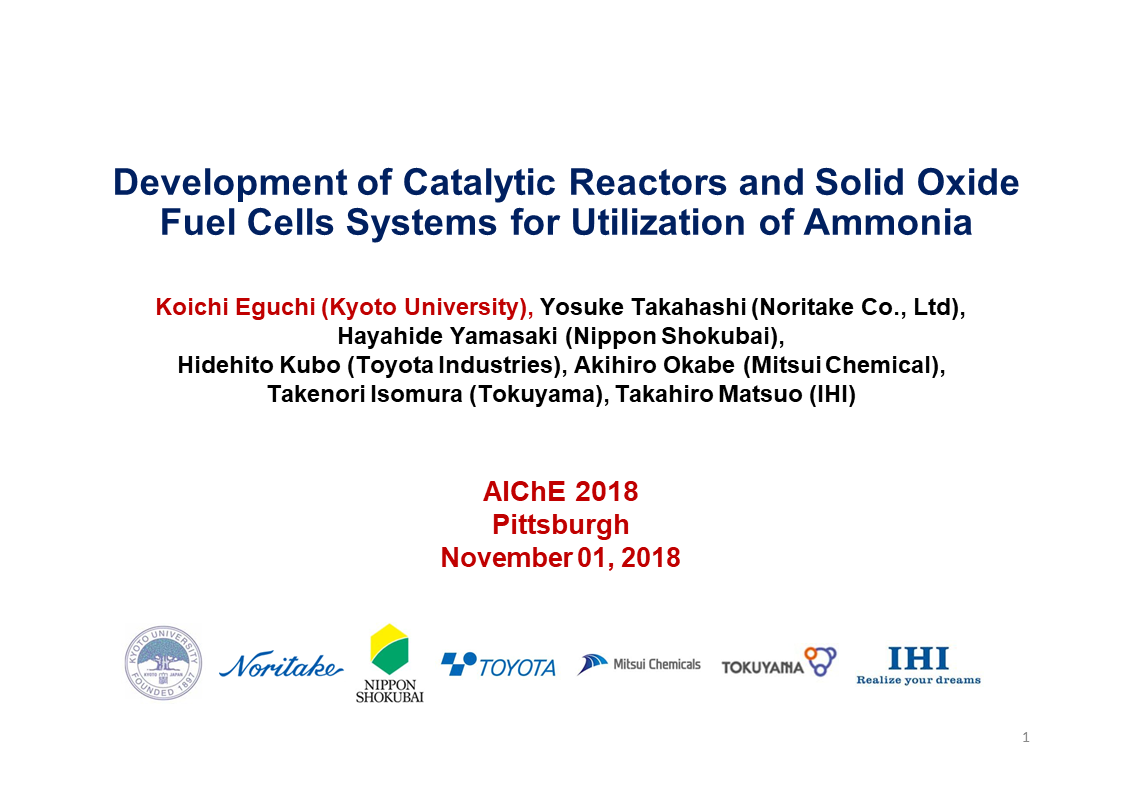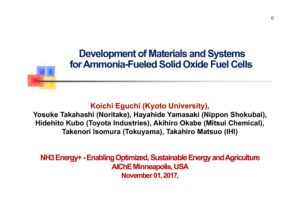Presentation
Ammonia Decomposition and Separation Using Catalytic Membrane Reactors
Hydrogen is the primary fuel source for fuel cells. However, the low volume density and difficulty in storing and transporting hydrogen are major obstacles for its practical utilization. Among various hydrogen carries, ammonia is one of the most promising candidates because of its high hydrogen density and boiling point and ease in liquefaction and transportation. The reaction temperature of ammonia cracking into nitrogen and hydrogen is about 500˚C or higher. The hydrogen can be effectively separated by the membrane based on Pd alloy about 500˚C. Currently, the extraction of hydrogen from ammonia is carried out by two step process involving…

